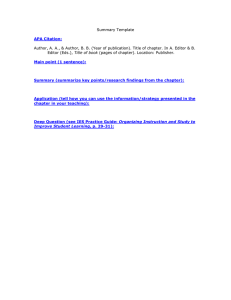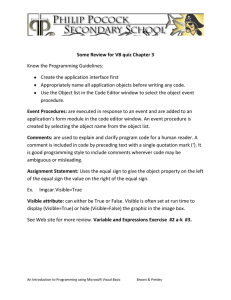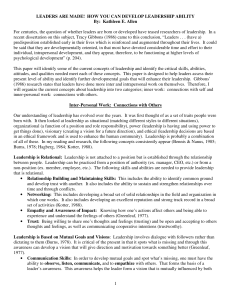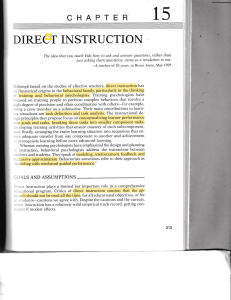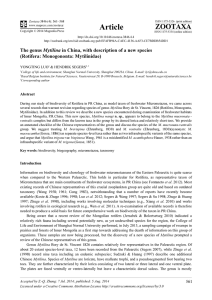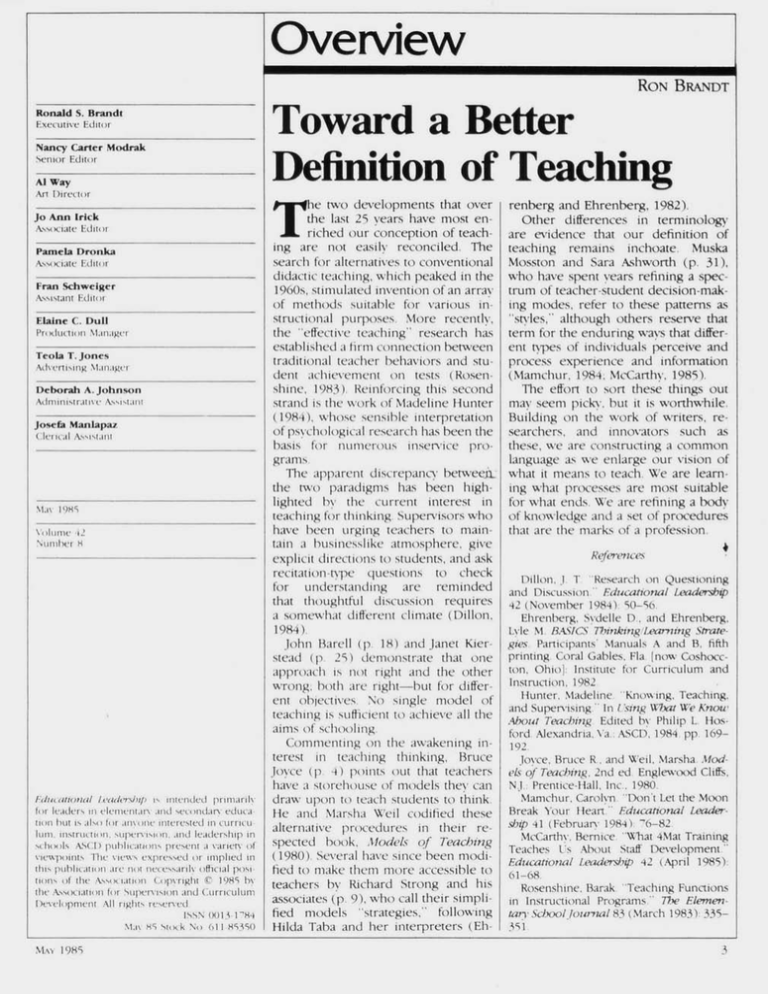
Overview
RON BRANDT
Toward a Better
Definition of Teaching
Ronald S. Brandt
Executive Editor
Nancy Carter Modrak
Senior Editor
Al Way
Art Director
he two
Jo Ann trick
AssoKiate Editor
Pamela Dronka
A.>s(-iate Editor
Fran Schweiger
Assistant Editor
Elaine C. Dull
Prl iCunion Mlanager
Teola T. Jones
Advertnising .Malgler
Deborah A. Johnson
Administr.at iv A.ssitliill
JoseEa Manlapaz
CrIeriAl ANsisttii11
Nll.tihr 8
rtiatrriorialL._culcJ.,nh IS Intendeid rrlil;lril
for leaders in elernenltar nIlnJsecondan- educatliol btlu is also for .Ian\i)1ri' irlltlteised In currlcu
lint.
Instrrl iio.i
ulnerl sil.
and leadership in
schitls ASCl) puhlicaltolns present .1variets of
Vlea 'iintl T he' l liens expressed oir implied in
this puhblicillloln are
Iltl
ionst of the /sitlallton
the
.
ssK'sciailio for
ilecessanrih
Ifcial p)si
Coop-right © 1985 b-
ulperIlUsiin and ( Irriculum
D)eeliopmnent All right
rreserved
ISSN (X)01 1-84
M;nxH5 Sttk No 611 8;4,iSO
N1 19#85
developments that over
the last 25 vears have most enriched our conception of teaching are not easily reconciled. The
search for alternatives to conventional
didactic teaching. which peaked in the
1960s, stimulated invention of an array
of methods suitable for various instructional purposes More recently,
the "effective teaching" research has
established a firm connection between
traditional teacher behaviors and student achievement on tests (Rosenshine, 1983). Reinforcing this second
strand is the work of Madeline Hunter
(1984), whose sensible interpretation
of psychological research has been the
basis for numerous inservice programs
The apparent discrepancy betwee/X
the two paradigms has been highlighted by the current interest in
teaching for thinking Supervisors who
have been urging teachers to maintain a businesslike atmosphere. give
explicit directions to students, and ask
recitation-type questions to check
for understanding are reminded
that thoughtful discussion requires
a somewhat different climate (Dillon,
1984)
John Barell (p. 18) and Janet Kierstead (p 25) demonstrate that one
approach is not right and the other
wrong. both are right-but for different objectives, No single model of
teaching is sufficient to achieve all the
aims of schooling.
Commenting on the awakening interest in teaching thinking, Bruce
Joyce (p 4) points out that teachers
have a storehouse of models thev can
draw upon to teach students to think.
He and Marsha Weil codified these
alternative procedures in their respected book. .Models of Teaching
(1980) Several have since been modified to make them more accessible to
teachers by Richard Strong and his
associates (p. 9), who call their simplified models "strategies," following
Hilda Taba and her interpreters (Eh-
renberg and Ehrenberg, 1982).
Other differences in terminology
are evidence that our definition of
teaching remains inchoate. Muska
Mosston and Sara Ashworth (p. 31),
who have spent years refining a spectrum of teacher-student decision-making modes, refer to these patterns as
"styles," although others reserve that
term for the enduring ways that different types of individuals perceive and
process experience and information
(Mamchur. 1984; McCarthy. 1985).
The effort to sort these things out
may seem picky. but it is worthwhile.
Building on the work of writers, researchers. and innovators such as
these, we are constructing a common
language as we enlarge our vision of
what it means to teach. We are learning what processes are most suitable
for what ends. We are refining a body
of knowledge and a set of procedures
that are the marks of a profession.
References
Dillon. J T 'Research on Questioning
and Discussion" Fducational Leders,
42 (November 1984): 50-56.
Ehrenberg, Svdelle D.. and Ehrenberg.
Lvle M BASICS Thi77kingLearning StrategiWs Participants' Manuals A and B. fifth
printing Coral Gables. Fla {now Coshoccton. Ohio]: Institute for Curriculum and
Instruction. 1982
Hunter. Madeline -Knor-%ing, Teaching.
and Supervising" In '.singWar We Know
.About Teaading Edited b! Philip L Hosford Alexandria. \a: .SCD. 1984 pp. 169192
Joyce. Bruce R. and N\eil. Marsha MAode&Lof Teaching, 2nd ed Englewood Cliffs,
NJ: Prentice-Hall, Inc.. 1980.
Mamchur. Carolsn "Don't Let the Moon
Break Your Heanrt Educational Leadership 41 (Februan 1984): -6-82
McCarthy. Bernice "'What 4Mat Training
Teaches C s About Staff Development"
Eduicational Leaders.ip 42 (Apnl 1985):
61-68.
Rosenshine. Barak Teaching Functions
in Instructional Programs" The Elemten
tarySchool loiznal 83 (March 1983): 335351
Copyright © 1985 by the Association for Supervision and Curriculum
Development. All rights reserved.


